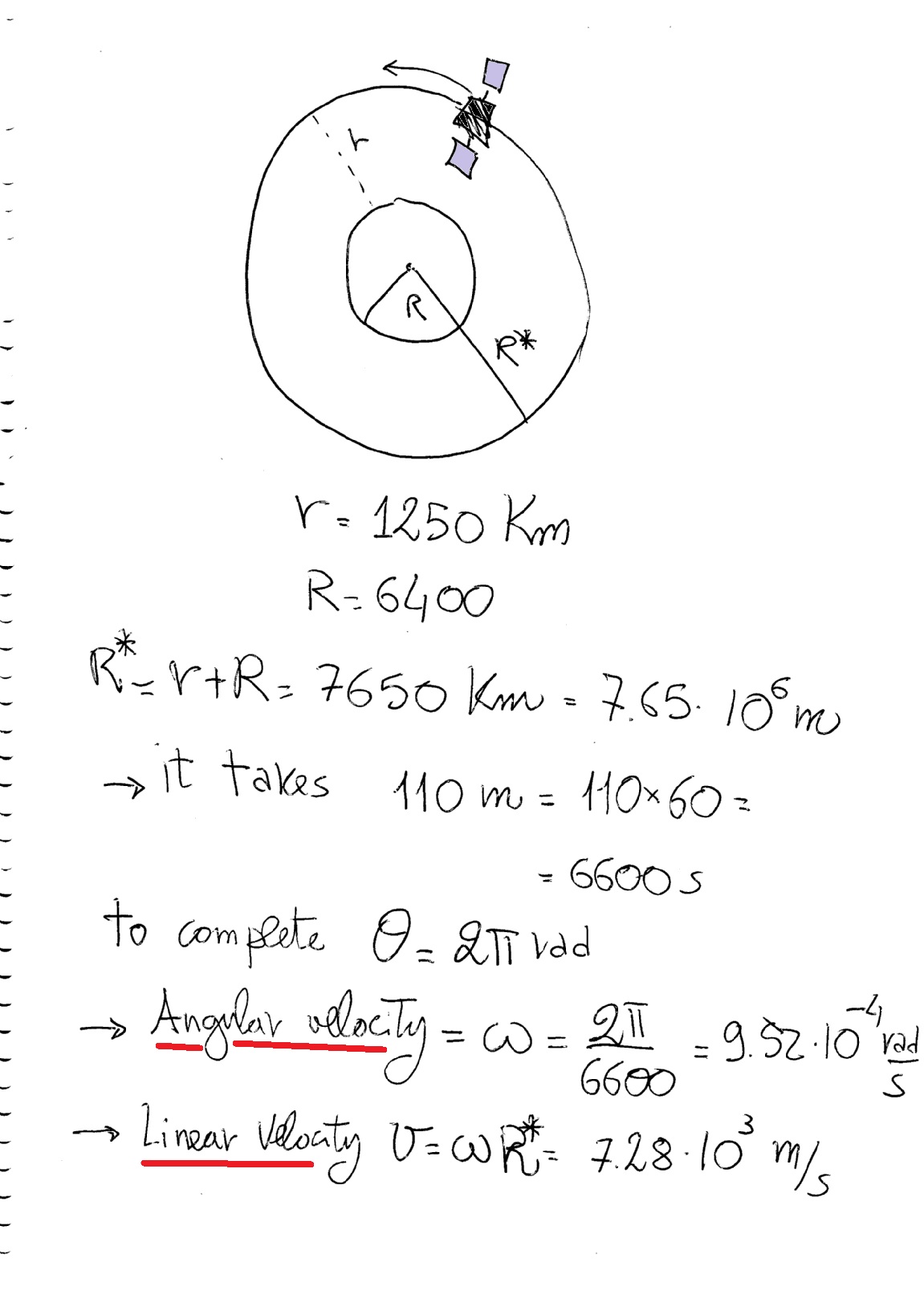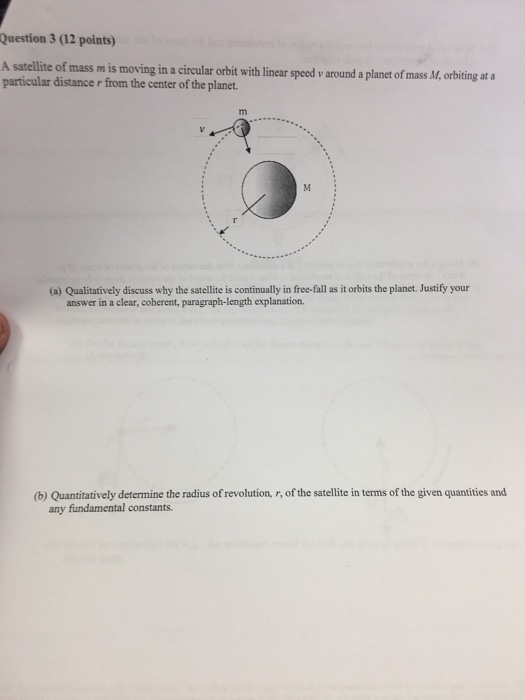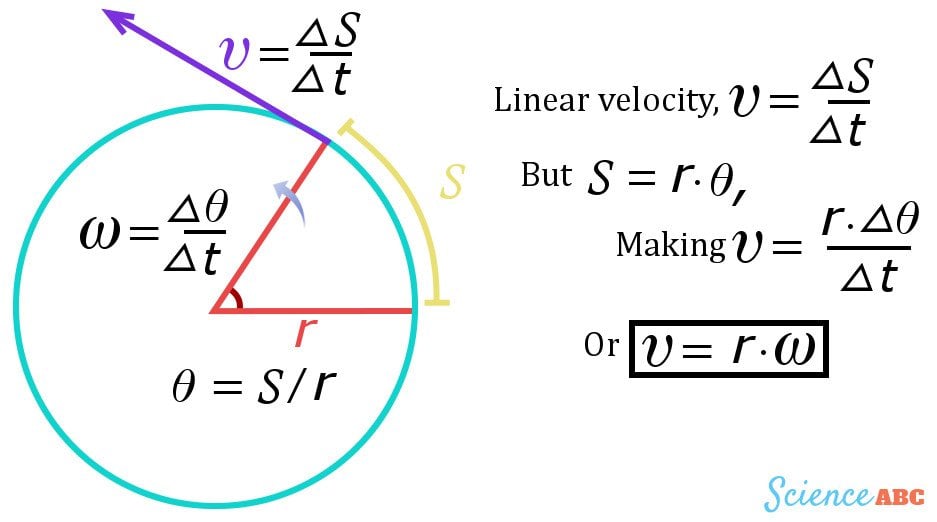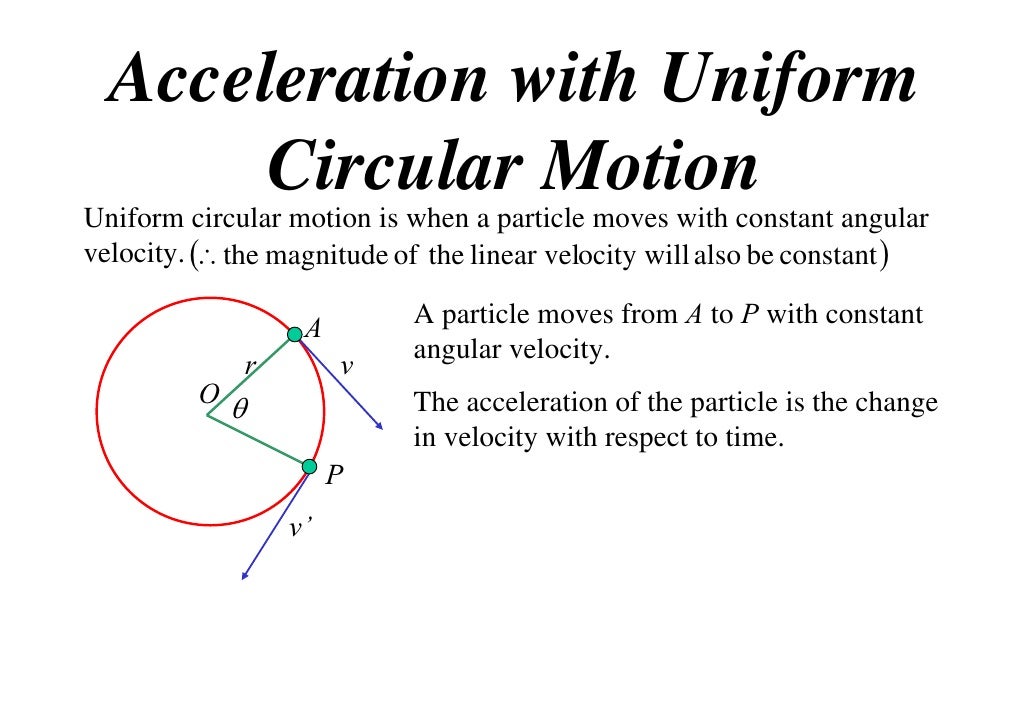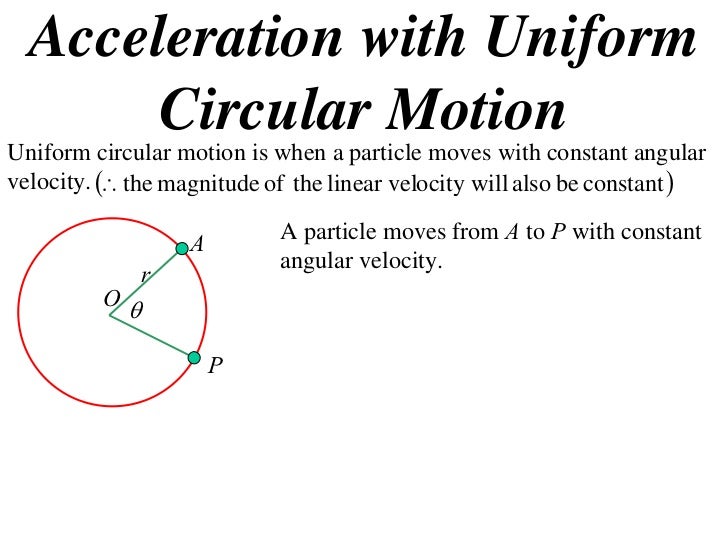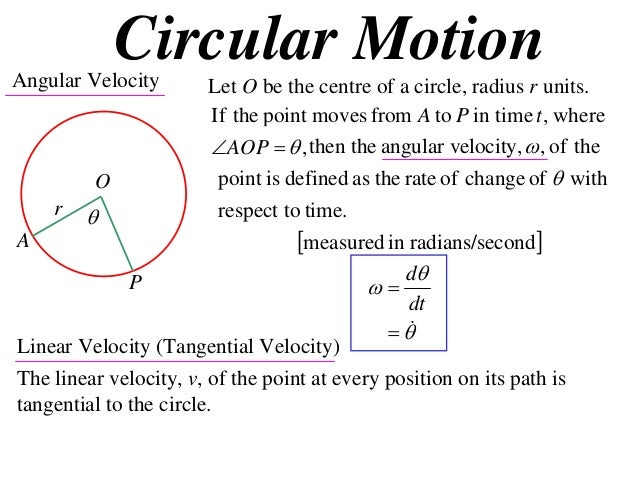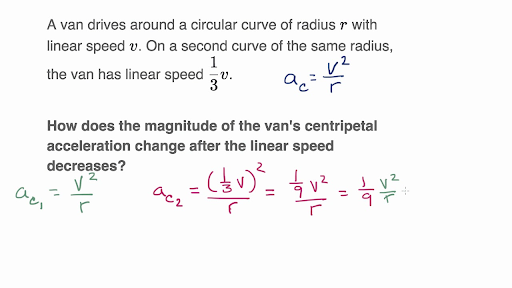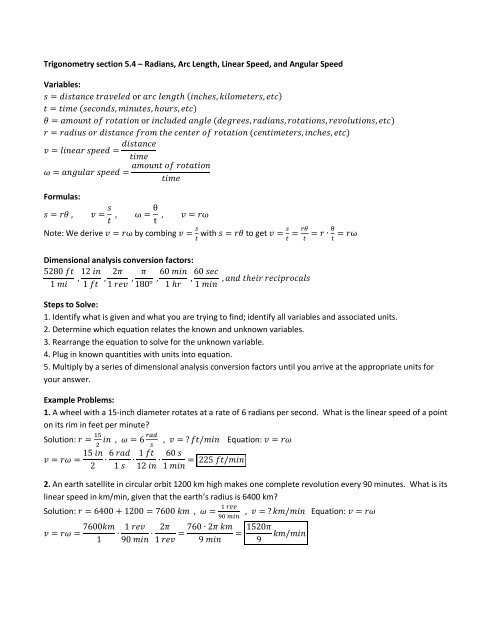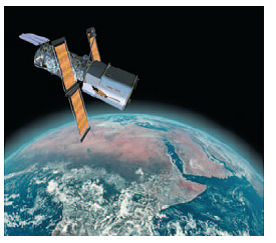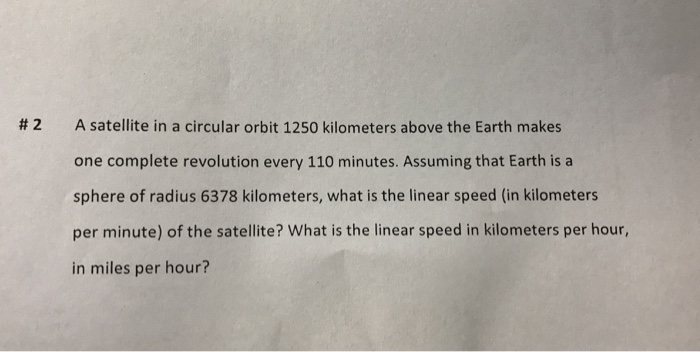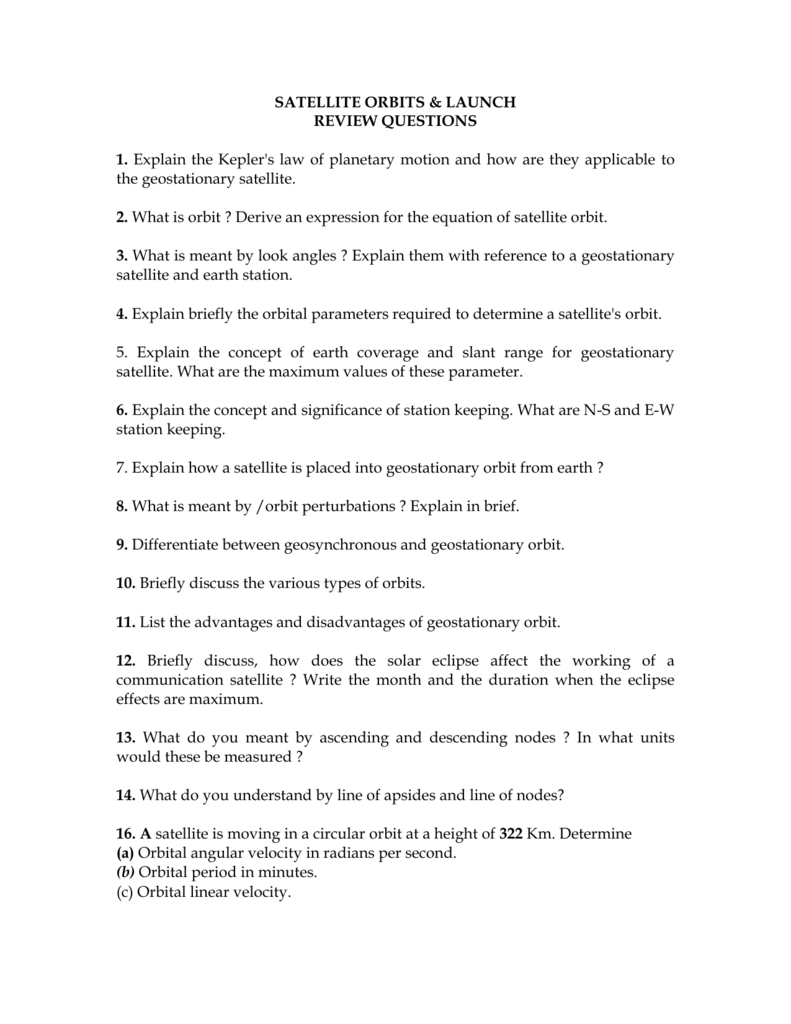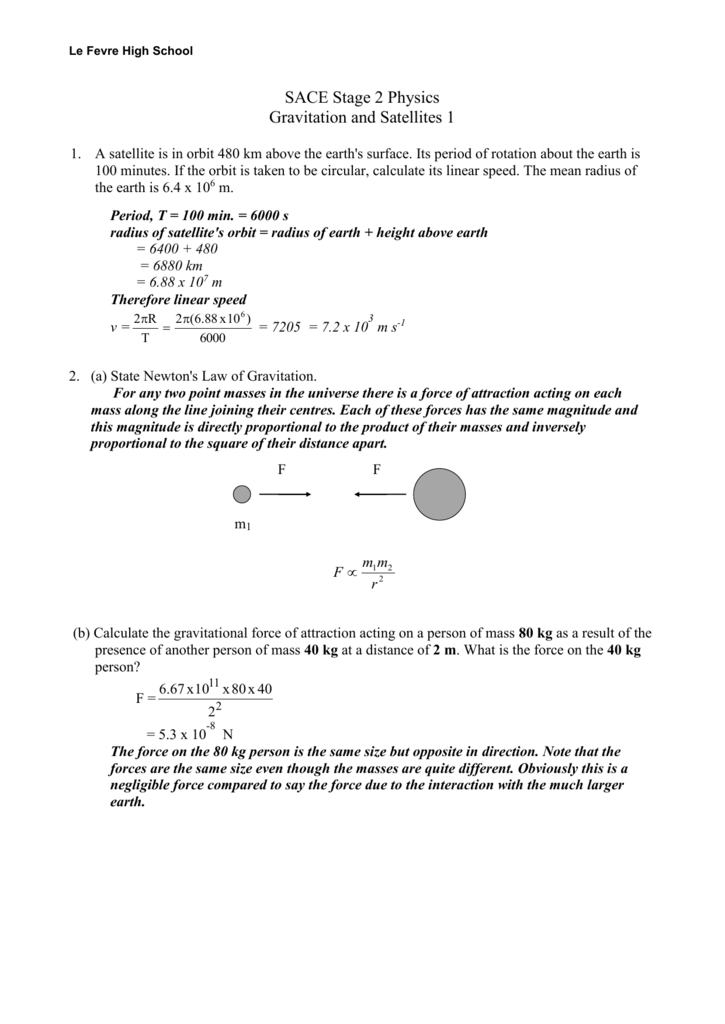Linear Velocity Of A Satellite In A Circular Orbit Is

The term can be used to refer to either.
Linear velocity of a satellite in a circular orbit is. A circular orbit is the orbit with a fixed distance around the barycenter that is in the shape of a circle. R 3 897 x 10 7 m the orbital radius for this satellite is 3 897 x 10 7 m. However when a small object like a satellite asteroid or small moon orbits a large object like a planet or star it is a good approximation to treat the system as a two body system with the larger body fixed. I have a problem from a sample final i believe they have incorrect answers.
A satellite traveling in a circular orbit 8000km from the earth s center takes 2 hours to make an orbit. V is the linear velocity of the satellite at a point on its circular track. The orbital radius can be found by rearranging the orbital velocity formula. Below the characteristics of a small satellite orbiting a massive planet at uniform speed in perfectly circular orbit are derived.
Here m is the mass of earth and m is the mass of the satellite which is having a uniform circular motion in a circular track of radius r around the earth. The orbital velocity of the international space station is 7672 m s. In gravitationally bound systems the orbital speed of an astronomical body or object e g. Planet moon artificial satellite spacecraft or star is the speed at which it orbits around either the barycenter or if one object is much more massive than the other bodies in the system its speed relative to the center of mass of the most massive body.
This physics video tutorial explains how to calculate the speed of a satellite in circular orbit and how to calculate its period around the earth as well. What is the linear velocity of the satellite and what is the angular velocity of the satellite. Taking the square root of each side leaves the following equation for the velocity of a satellite moving about a central body in circular motion. Listed below is a circular orbit in astrodynamics or celestial mechanics under standard assumptions.
If not i would appreciate if someone could show me why the answer i am getting is wrong and if so how to get the corr. Where g is 6 673 x 10 11 n m 2 kg 2 m central is the mass of the central body about which the satellite orbits and r is the radius of orbit for the satellite. What is the orbital radius.


